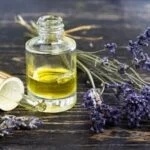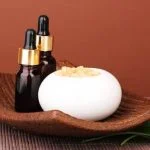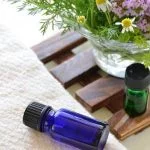Aromatherapy oils have long been recognized for their therapeutic properties and ability to enhance relaxation and promote overall well-being. When combined with the soothing techniques of massage, these oils can create a truly transformative experience. In this article, we will explore the benefits of aromatherapy oils in the context of massage, as well as delve into their rich history.
Aromatherapy, also known as essential oil therapy, is a holistic healing practice that utilizes essential oils extracted from plants to promote physical and emotional well-being. While the use of aromatic plants for healing purposes dates back thousands of years, it was not until the 20th century that modern aromatherapy gained recognition as a complementary therapy.
When used for massage, aromatherapy oils can transform a regular session into a sensory journey. These oils are carefully selected based on their unique properties to provide specific benefits such as relaxation, stress relief, pain management, or increased energy. From lavender to eucalyptus to chamomile, each essential oil offers its own distinct aroma and therapeutic effects.
In the following sections of this article, we will explore different types of carrier oils used in aromatherapy massage and discuss how to select the right one based on personal preferences and desired effects. We will also highlight popular essential oils used in aromatherapy massage and discuss their properties and benefits.
So whether you are looking to unwind after a long day or invigorate your senses, join us on this journey as we discover how to make aromatherapy oils for massage and unlock their full potential.
Understanding the Different Types of Carrier Oils
Aromatherapy massage relies on the use of carrier oils, which serve as the base for diluting essential oils and creating the perfect blend for massage. Understanding the different types of carrier oils is essential for achieving the desired effects and personalizing your aromatherapy massage experience.
There are various types of carrier oils that can be used in aromatherapy massage, each with its unique properties and benefits. Some common carrier oils include sweet almond oil, jojoba oil, coconut oil, grapeseed oil, and avocado oil. Each carrier oil has its own texture, consistency, scent, and absorption rate, making it suitable for different skin types and preferences.
Sweet almond oil is one of the most popular carrier oils used in aromatherapy massage due to its light texture and mild scent. It is easily absorbed by the skin and leaves it feeling soft and nourished. Jojoba oil is another commonly used carrier oil known for its similarity to the skin’s natural sebum. It is deeply moisturizing, non-greasy, and ideal for dry or sensitive skin.
Coconut oil is a versatile carrier oil that solidifies at cooler temperatures but melts upon contact with the skin. It has a distinctive tropical scent and provides excellent hydration to the skin. Grapeseed oil is a lightweight carrier oil that absorbs quickly without leaving a greasy residue. It is rich in antioxidants and vitamin E, making it beneficial for maintaining youthful-looking skin.
When selecting a carrier oil for aromatherapy massage, consider your personal preferences as well as any specific desired effects you want to achieve. For example, if you prefer a lighter texture and quicker absorption, sweet almond or jojoba oil may be ideal choices. If you are looking for additional moisturization or have specific skincare concerns such as dryness or aging, coconut or grapeseed oil could be more suitable options.
Top Essential Oils for Aromatherapy Massage
Aromatherapy massage is a popular form of holistic therapy that combines the benefits of massage with the use of essential oils. Essential oils are highly concentrated plant extracts that have been used for centuries to promote relaxation, reduce stress, relieve muscle tension, and improve overall well-being. In this section, we will explore some of the top essential oils used in aromatherapy massage and delve into their unique properties and benefits.
1. Lavender: Known for its soothing and calming effects, lavender essential oil is often used in aromatherapy massage to promote relaxation and relieve anxiety. It has also been found to help reduce pain and inflammation, making it an excellent choice for soothing sore muscles.
2. Eucalyptus: With its refreshing and invigorating scent, eucalyptus essential oil is commonly used in aromatherapy massage to open up the airways and alleviate respiratory congestion. It has antimicrobial properties as well, making it beneficial for those suffering from colds or sinus infections.
3. Peppermint: If you’re looking for a revitalizing and energizing aromatherapy experience, peppermint essential oil is a great choice. Its cooling sensation can help relieve muscle pain and headaches while its uplifting aroma can boost mood and mental clarity.
4. Chamomile: Chamomile essential oil is renowned for its calming properties, making it an ideal option for those seeking relaxation during their aromatherapy massage sessions. It can help soothe irritated skin conditions as well as promote better sleep.
5. Rosemary: Used for centuries for its stimulating effects on the mind and body, rosemary essential oil is often incorporated into aromatherapy massages to improve circulation, relieve muscle pain, enhance concentration, and reduce fatigue.
Each essential oil has its own distinct aroma profile as well as therapeutic properties, so it’s important to choose oils that align with your desired goals during an aromatherapy massage session. Whether you’re seeking relaxation, pain relief, or mental clarity, there is an essential oil that can enhance your massage experience and promote overall well-being.
Proper Dilution Techniques
When it comes to using essential oils for massage, proper dilution is essential to ensure safety and effectiveness. Essential oils are highly concentrated and can cause skin irritation or other adverse reactions if not diluted correctly. This section will provide a step-by-step guide on how to safely dilute essential oils with carrier oils to create the perfect blend for massage.
The first step in diluting essential oils is choosing the right carrier oil. Carrier oils are used as a base for dilution and help carry the essential oil onto the skin. Some popular carrier oils include sweet almond oil, jojoba oil, and coconut oil.
Each carrier oil has its own unique properties and benefits, so it’s important to choose one that suits your preferences and desired effects. For example, sweet almond oil is lightweight and absorbs easily into the skin, making it great for all skin types.
Once you have chosen your carrier oil, you can begin diluting the essential oil. The general rule of thumb is to use a 2% dilution rate, which means adding 12 drops of essential oil for every ounce (30 ml) of carrier oil. This is considered a safe and effective dilution for most adults.
To create a 2% dilution, follow these steps:
- Measure out the desired amount of carrier oil into a dark glass bottle.
- Add the appropriate number of drops of essential oil based on the recommended dilution rate.
- Close the bottle tightly and gently roll or shake it to ensure thorough blending.
- Label the bottle with the name of the blend and date of creation.
It’s important to note that certain essential oils may require different dilution rates due to their potency or specific properties. Be sure to research individual essential oils before use and adjust the dilution rate accordingly.
| Carrier Oil | Properties |
|---|---|
| Sweet Almond Oil | Lightweight, absorbs easily into the skin, suitable for all skin types. |
| Jojoba Oil | Similar composition to the skin’s natural oils, moisturizing, suitable for acne-prone or oily skin. |
| Coconut Oil | Nourishing, antimicrobial properties, solid at room temperature. |
By following proper dilution techniques, you can ensure a safe and enjoyable aromatherapy massage experience. Diluting essential oils with carrier oils not only reduces the risk of skin irritation but also helps spread the aroma more evenly and allows for better absorption into the skin. Experiment with different carrier oils and essential oil combinations to create your perfect blend for a truly therapeutic massage.
Blending Techniques
Creating personalized aromatherapy massage oils is an art form that allows individuals to tailor their massage experience to their specific needs and preferences. One of the key aspects of this process is utilizing different blending techniques to achieve desired scent profiles and therapeutic effects. By understanding the importance of notes and creating a harmonious aroma profile, individuals can create unique blends that cater to their personal tastes.
When it comes to blending techniques, there are several approaches that can be utilized. The first technique involves blending essential oils in equal proportions, also known as symmetrical blending. This technique creates a balanced aroma profile where each oil contributes equally to the overall scent. It is ideal for beginners or those who prefer a well-rounded scent in their massage oils.
Another blending technique is asymmetrical blending, which involves creating a blend with one dominant essential oil and one or more supporting essential oils. The dominant oil provides the main scent, while the supporting oils enhance or complement its fragrance. This technique allows for greater creativity and flexibility in customizing blends based on personal preferences or specific therapeutic goals.
In addition to understanding blending techniques, it is important to consider the concept of notes when creating aromatherapy massage oils. Essential oils are categorized into top, middle, and base notes based on their volatility and evaporation rates.
Top notes are light and volatile oils that provide initial impact and fragrance in a blend. Middle notes have a balancing effect and help create harmony between other notes, while base notes are heavier and linger longer, providing depth and stability to the overall aroma profile.
By combining different notes in a blend, individuals can create layered scents that evolve over time during a massage session. This adds complexity and depth to the experience while ensuring that each note serves its intended purpose therapeutically.
Creating a harmonious aroma profile is crucial in producing an effective aromatherapy massage oil. It involves selecting essential oils that blend well together, ensuring that their fragrances complement and enhance one another. This can be achieved by considering the properties, therapeutic benefits, and scent profiles of each essential oil being used. Experimenting with different combinations and taking note of the interactions between oils can help individuals create balanced and harmonious blends.
Essential Oils and Their Corresponding Massage Techniques
When it comes to aromatherapy massage, the choice of essential oils can greatly enhance relaxation, relieve tension, and invigorate the body. Different essential oils have unique properties and benefits that can complement specific massage techniques. By understanding the characteristics of each oil and its corresponding massage technique, you can create a truly harmonious and effective experience.
One popular essential oil for relaxation is lavender. Known for its calming properties, lavender oil is often used in Swedish or relaxation massages. The gentle, flowing strokes of these massage techniques combined with the soothing scent of lavender can help reduce stress, anxiety, and promote better sleep. Lavender oil can also be blended with other relaxing oils such as chamomile or bergamot for an even more tranquil experience.
For relieving tension and muscle soreness, peppermint oil is a go-to choice. Its cooling sensation can provide immediate relief when applied through techniques like deep tissue or sports massage. Peppermint oil has analgesic properties that help relax muscles and reduce inflammation. Its invigorating aroma also adds a refreshing element to the massage session.
If you’re looking to invigorate the body and boost energy levels, citrus oils like lemon or orange are excellent options. These bright and uplifting scents pair well with stimulating massage techniques such as Thai or Shiatsu massage. The combination of vigorous movements and zesty aromas helps awaken the senses, increase circulation, and revitalize both the body and mind.
Remember to always consider personal preferences and any contraindications before selecting essential oils for aromatherapy massage. Some individuals may have allergies or sensitivities to certain oils, so it’s important to perform a patch test beforehand. Overall, combining specific essential oils with appropriate massage techniques can elevate your aromatherapy experience to new heights of relaxation and rejuvenation.
Storage and Shelf Life
Optimal Storage Conditions
Properly storing aromatherapy massage oils is essential to maintain their quality and extend their shelf life. To maximize the longevity of your oils, it is important to store them in a cool, dark place away from direct sunlight or heat sources. Sunlight and heat can cause the oils to deteriorate more quickly and lose their therapeutic properties.
It is recommended to store your aromatherapy oils in amber or dark-colored glass bottles, as they help protect the oils from light exposure. These darker bottles are also effective in preventing oxidation, which can occur when the oil comes into contact with air, causing it to degrade.
The Importance of Temperature Control
Temperature plays a crucial role in preserving the quality of aromatherapy massage oils. It is best to store them at a consistent temperature between 60-70 degrees Fahrenheit (15-21 degrees Celsius). Extreme fluctuations in temperature can negatively affect the aroma and potency of the oils.
Avoid storing your oils near appliances that generate heat, such as stoves or radiators. Heat exposure can lead to an alteration in chemical structure and reduce the effectiveness of the oil. Keeping your oils in a cool room or even refrigerating them can significantly prolong their shelf life.
Preventing Contamination
To prevent contamination and maintain the purity of your aromatherapy massage oils, it is crucial to practice good hygiene when handling them. Make sure your hands are clean before using them and avoid touching the dropper or bottle opening directly with your skin. This helps prevent bacterial growth and ensures that no foreign substances enter the bottle.
Additionally, avoid using dirty utensils or contaminated surfaces when blending or transferring oils. Be mindful of cross-contamination by using separate droppers or pipettes for each oil you work with.
By following these proper storage practices, you can maximize the shelf life of your aromatherapy massage oils and ensure that they retain their therapeutic properties for as long as possible.
Safety Precautions
Aromatherapy oils can provide many benefits during a massage, but it is important to use them safely and be aware of potential contraindications. This section will address the safety precautions that should be taken when using aromatherapy oils for massage and discuss certain individuals who may need to exercise caution.
One of the main safety precautions when using aromatherapy oils for massage is to always dilute them properly with a carrier oil. Essential oils are highly concentrated and can cause skin irritation or sensitization if used undiluted. Diluting essential oils with a carrier oil helps to reduce the risk of adverse reactions.
It is also important to be aware of any potential contraindications before using aromatherapy oils for massage. Some essential oils are not suitable for use during pregnancy or by individuals with certain medical conditions, such as epilepsy or high blood pressure. It is recommended to consult with a qualified aromatherapist or healthcare professional before using essential oils if you have any concerns or health issues.
In addition, some individuals may have allergies or sensitivities to certain essential oils. It is important to patch test a small amount of diluted oil on the skin before applying it all over the body during a massage. This can help identify any potential allergic reactions or sensitivities.
Table: Common Contradictions for Using Aromatherapy Oils
| Contradiction | Essential Oils to Avoid |
|---|---|
| Pregnancy | Rosemary, Clary Sage, Juniper Berry |
| Epilepsy | Sage, Fennel, Rosemary |
| Allergies | Lavender, Tea Tree, Eucalyptus |
By following these safety precautions and being mindful of potential contraindications, you can safely enjoy the benefits of aromatherapy oils during a massage. It is always best to seek guidance from a qualified professional if you have any concerns or questions about using essential oils for massage.
Bonus Tips and DIY Recipes
In conclusion, creating personalized aromatherapy oils for massage at home is a wonderful way to enhance your massage experience and tailor it to your specific needs and preferences. By exploring the benefits and history of aromatherapy oils, understanding different carrier oils, and selecting the right essential oils, you can create a blend that provides optimal therapeutic effects.
Proper dilution techniques are crucial for safety, ensuring a perfect blend that is both effective and gentle on the skin. By following a step-by-step guide on diluting essential oils with carrier oils, you can achieve a harmonious aroma profile that promotes relaxation, relieves tension, and invigorates the body.
Additionally, learning about blending techniques and the importance of notes will allow you to create truly personalized aromatherapy massage oils. Matching essential oils with specific massage techniques further enhances their benefits and maximizes relaxation.
To make the most out of your personalized aromatherapy oil blends, it is important to properly store them to maintain their therapeutic properties and maximize their shelf life. Storing them in dark glass bottles in a cool, dry place will help preserve their potency.
Lastly, it is vital to take safety precautions when using aromatherapy oils for massage. Being aware of potential contraindications and cautions for certain individuals will ensure a safe and enjoyable experience.
With these bonus tips and step-by-step DIY recipes provided throughout this article, readers have been equipped with the knowledge necessary to create unique aromatherapy oil blends tailored specifically to their needs. So go ahead and start experimenting with different combinations of carrier oils and essential oils to find your perfect blend for an indulgent aromatherapy massage at home.
Frequently Asked Questions
What Oil to Mix With Essential Oils for Massage?
When it comes to mixing essential oils for massage, there are a few carrier oils that work well. One popular option is sweet almond oil, which is lightweight and easily absorbed by the skin. Another commonly used carrier oil is jojoba oil, known for its moisturizing properties and similarity to the skin’s natural sebum.
Fractionated coconut oil is another choice due to its long shelf life and non-greasy feel. Grapeseed oil is also frequently used as it is odorless and has a smooth texture. Ultimately, the choice of carrier oil depends on personal preference and specific needs.
How Do You Make Aromatherapy Oil?
Making aromatherapy oils can be a fairly simple process. The first step is to choose a base oil or carrier oil which will hold the essential oils and dilute them before use. Common base oils include sweet almond oil, jojoba oil, or grapeseed oil. Next, select the essential oils you wish to use for your desired effect – whether it’s relaxation, invigoration, or something else.
Use about 10-15 drops of essential oils per 2 tablespoons of base oil, but feel free to adjust based on personal preference and strength of scent desired. Combine the essential oils with the base oil in a dark glass bottle and shake well to mix thoroughly. Your aromatherapy oil blend is now ready for use.
What Oils Are Used for Aromatherapy Massage?
A variety of oils can be used for aromatherapy massage depending on individual needs and preferences. Some common choices include lavender essential oil, known for its calming properties which can help reduce stress and promote relaxation during a massage session. Eucalyptus essential oil is often chosen for its refreshing scent and potential respiratory benefits when inhaled during a massage session.
Peppermint essential oil can provide a cooling sensation on the skin while also possibly aiding in relieving muscle tension and soreness.The choice of oils also varies depending on the desired effect – some may prefer oils such as bergamot for its uplifting properties, or ylang-ylang for a sensual and soothing experience. Ultimately, it’s important to consider personal preferences and consult with a trained aromatherapist if necessary to select the most appropriate oils for an aromatherapy massage.

Are you looking for a natural way to improve your health and wellbeing?
If so, aromatherapy may be the answer for you.






